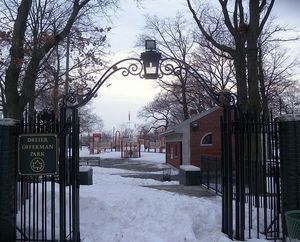Smelly drains are a common problem, especially when the drains have not been used for a number of days. After an extended vacation, I noticed the odor of sewage coming from a bathtub drain in an upstairs bathroom. I contacted a plumber for advice. In many cases the drains will no longer emit an odor once the water begins running again and fills the p-trap. What happens is the p-trap dries out, and when the water plug is gone, smelly gases are able to enter the home by way of the drain. If you have smelly drains, try the following methods I was given to clean the pipes and get rid of the odor. It is usually easy to get rid of the smell and keep household drains running smooth and odor-free.
Precautionary Statement
Drains that continue to emit a bad odor might be caused by inadequate ventilation, a partial blockage, or other more serious problems. If bad odors persist, consult a licensed plumber to get rid of the problem. When in doubt regarding the safety of cleaning products, follow manufacturer instructions to avoid damaging surfaces in and around sinks. In addition, never pour non-diluted chlorine bleach into sinks. It can cause damage to metal surfaces and sinks. Instead, mix one teaspoon of chlorine bleach for every quart of water, and follow product label instructions for best results. Those with septic systems should consult a plumber or a septic system professional for advice before using the following methods to get rid of smelly drains.
Steps to Get Rid of and Prevent Smelly Drains
Bathroom drains and kitchen sinks are most often affected by the growth of odor-causing bacteria that comes from food particles, debris, and oils from the skin. To get rid of the smelly problem, begin by plugging the drains. Pour approximately one-fourth of a cup of degreasing dishwashing liquid into the smelly sinks along with very hot water. I always use Dawn. If applicable, cover the overflow to allow the smelly sink to fill to the top. Open the drains to allow the water and degreaser to run through the pipes and flush away smelly gunk and bacteria that builds up on the walls of the pipes. Lastly, mix one teaspoon of chlorine bleach with one quart of water, and after cleaning stoppers and drain plugs, allow it to run down the smelly drain to kill any remaining odor-causing bacteria.
Baking soda and white vinegar can also be used to clean smelly drains. Sprinkle two tablespoons of vinegar over closed drains, and follow up with approximately one cup of white vinegar. When the mixture begins to foam, open the plugs and allow it to work for several minutes. Rinse it down the drain with about two cups of very hot water. Follow up with a diluted mixture of chlorine bleach and water to get rid of any smelly germs that remain.
Clean the drains each week to prevent future problems with smelly pipes. Prevention is the best way to get rid of odors before they begin. With proper care and cleaning, the pipes leading from sinks, tubs, and showers will no longer emit smelly and embarrassing odors throughout the home.







